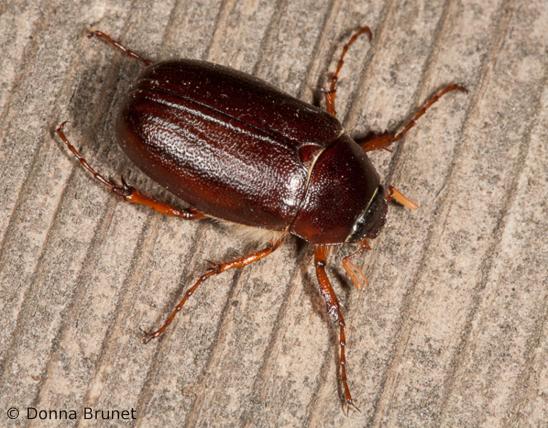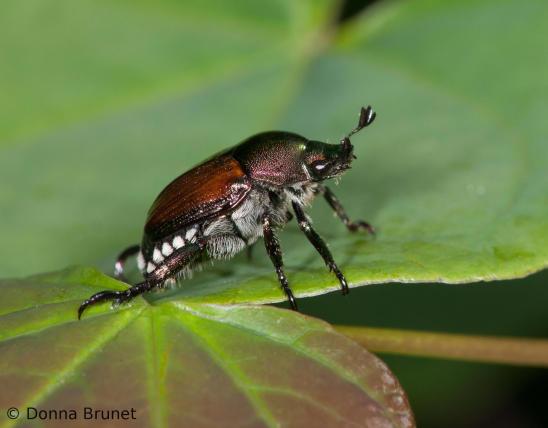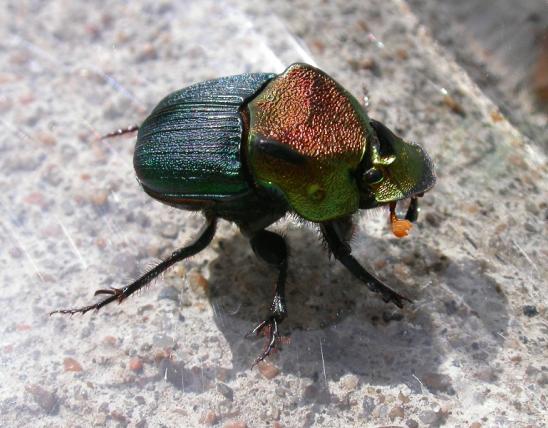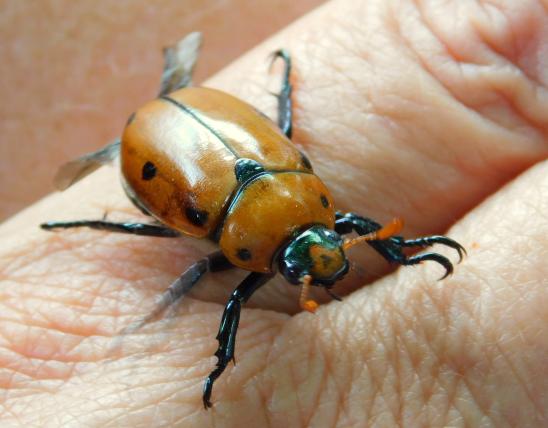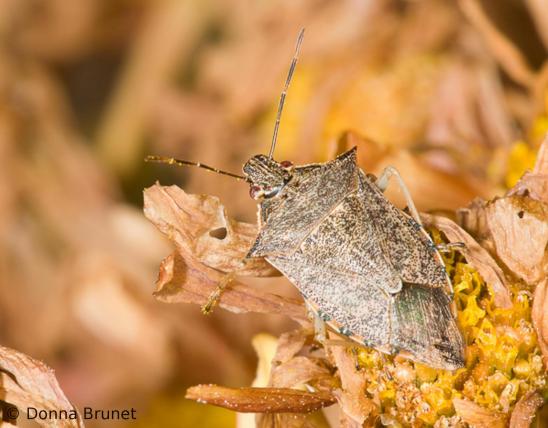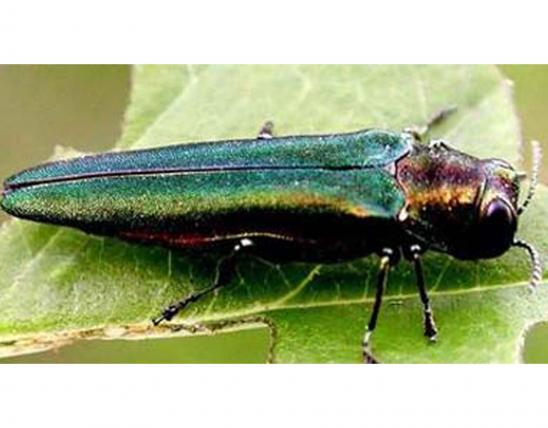Media
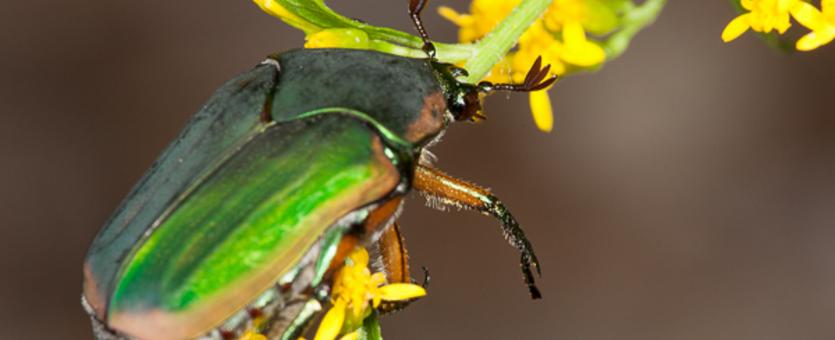
Scientific Name
Cotinis nitida
Family
Scarabaeidae (scarab beetles) in the order Coleoptera (beetles)
Description
Adult green June beetles are about an inch long, with dull metallic green wings, gold or brownish highlights on head and sides, and shiny green underparts. In flight, they make a loud buzzing noise, much like that of a bumblebee.
Green June beetles belong to a large family of beetles called scarabs. As with other scarabs, they are oval, stout, and have clubbed antennae with segments that can press tightly together or can be fanned open like a feather.
The larvae of green June beetles are cream-colored, C-shaped grubs that live underground. The heads are dark brown, and they have three pairs of legs.
Learn more about the green June beetle and other scarab beetles in their group page.
Size
Length: about 1 inch (adults); up to 2 inches (larvae).
Where To Find
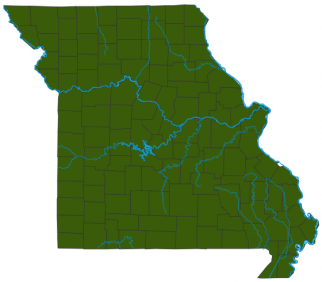
Statewide.
Habitat and Conservation
Because they fly, these beetles may be found nearly anywhere. They are diurnal but are still drawn to lights after dark. Adults are usually seen only in summer. They are most common in woodland borders, agricultural areas, and around homes with lawns. They are also found on and near compost heaps, where there is decaying plant material for them to eat. Adults are sometimes seen flying in large numbers, just above the ground. The larvae live in the soil, particularly in rich soil or manure.
Food
Adults eat ripe and rotting peaches, berries, apples, grapes, and other fruits. They also eat pollen and plant leaves and drink sap and other sweet fluids. The larvae (grubs) eat roots of many kinds of plants, including grasses and a wide array of ornamental and agricultural plants.
Status
Common. Because its feeding can damage lawns, crops, and gardens, this species is often considered a pest.
Life Cycle
Life Cycle
After mating, females dig into rich soil to deposit their eggs, which hatch in a little over two weeks. The grubs live underground for a year, feeding on plant roots and decaying plant matter, molting as they grow. They descend much lower into the soil to overwinter. When fully grown, in late spring the larvae pupate for a few weeks, each within a small cavity in the soil. They emerge as adults in June and crawl to the surface to fly, mate, and lay eggs.
Human Connections
During years and in places where these beetles are numerous, their feeding can damage lawns and crops. Meanwhile, the grubs are famous as a free, live fishing bait, being one of the few types plentiful in spring.
Ecosystem Connections
Many animals root out the grubs and eat them, including skunks, moles, and birds such as crows and grackles. Many other animals, including birds and frogs, eat the adults. Certain types of flies and wasps are parasitic on the adults and larvae, laying eggs on them that hatch and devour the host.
Title
Media Gallery
Image
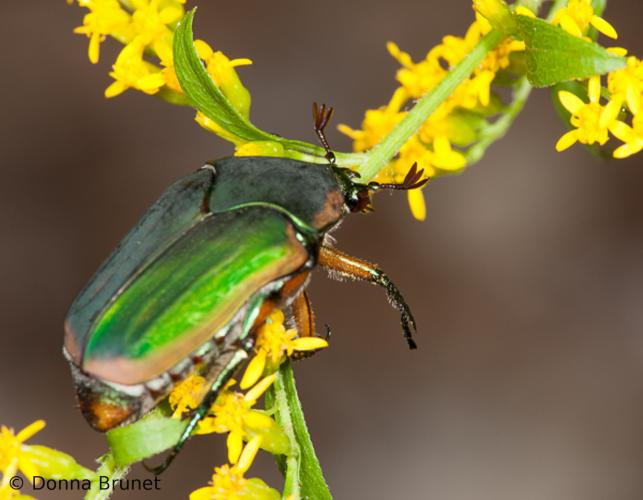
Caption
Green June beetles are common in Missouri. These large, metallic green beetles buzz loudly when they fly. They are attracted to ripe and rotting fruit and compost piles.
Credit
Donna Brunet
Right to Use
Image
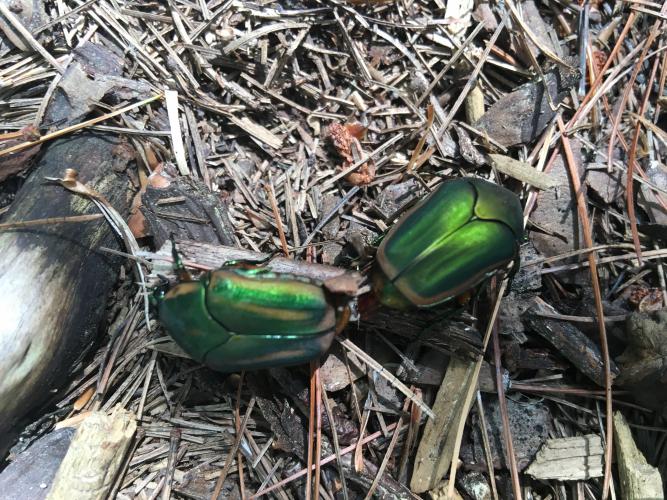
Credit
Submitted by Patty Snider
Right to Use
Image
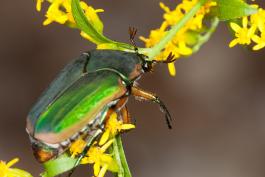
Image
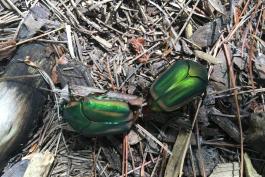
Title
Similar Species
About Land Invertebrates in Missouri
Invertebrates are animals without backbones, including earthworms, slugs, snails, and arthropods. Arthropods—invertebrates with “jointed legs” — are a group of invertebrates that includes crayfish, shrimp, millipedes, centipedes, mites, spiders, and insects. There may be as many as 10 million species of insects alive on earth today, and they probably constitute more than 90 percent all animal species.






















